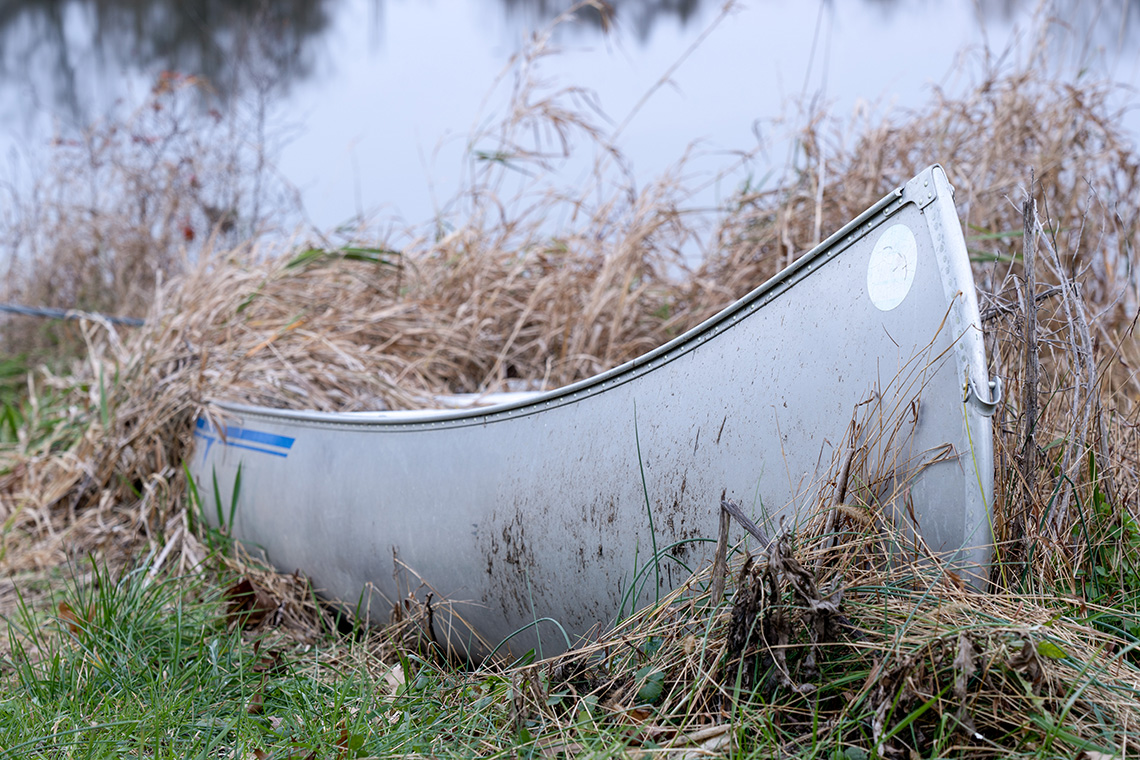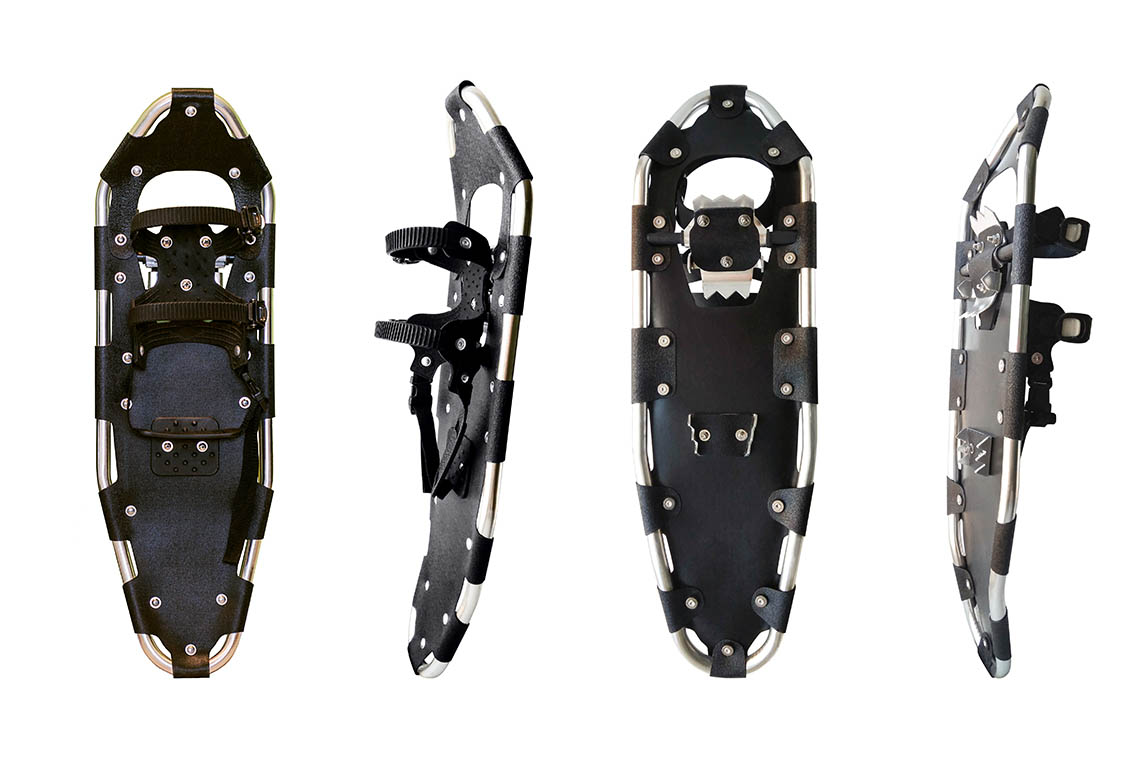Minds On
Transportation

“Kitchenuhmaykoosib means the big lake where the trout are found. Inninuwug means the people
and when you put them together it means the peoples of the Big Lake where the trout are
found.”
– John Cutfeet
Many different types of transportation methods were established before the invention of the car and other types of vehicles.
Let’s explore examples of transportation traditions from the Kitchenuhmaykoosib Inninuwug (KI) First Nation community.
Explore this video entitled “Transportation” to learn more about types of transportation used by the KI First Nation community in both past and present.
As you explore, consider during which season each mode of transportation is being used. Record your responses using a method of your choice.
Action
Indigenous knowledge
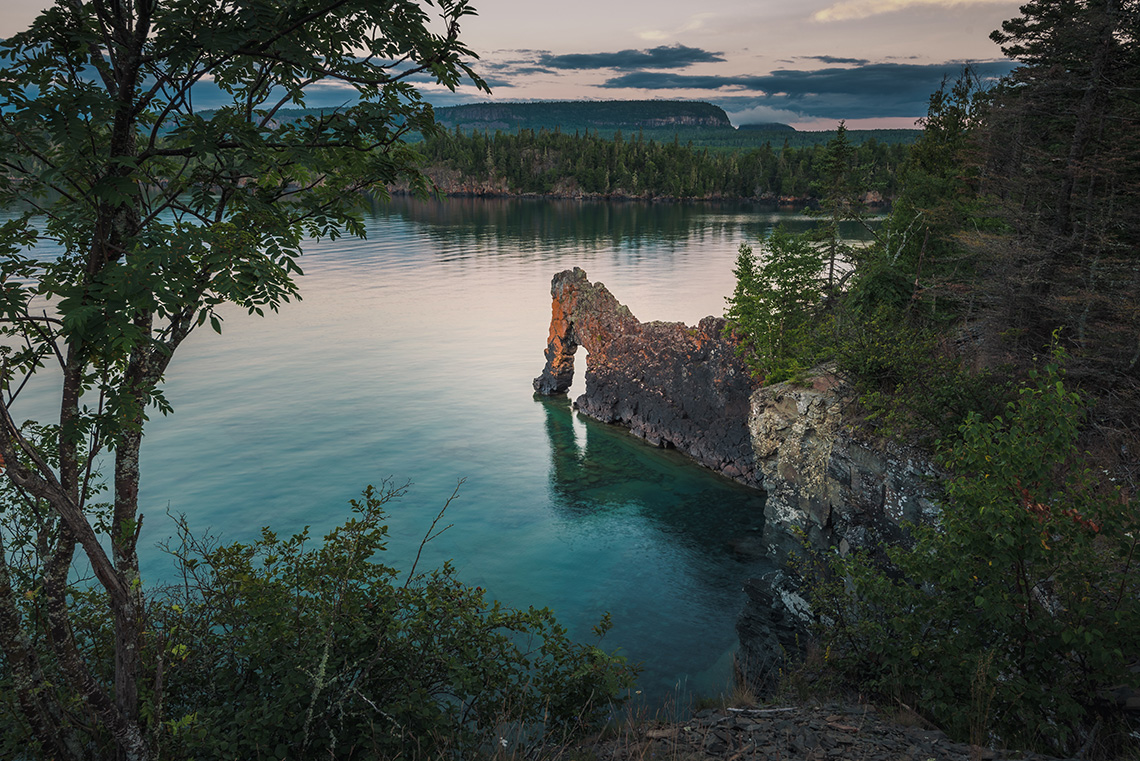
In the Minds On, you explored a video with members of the Kitchenuhmaykoosib Inninuwug First Nation community.
There are many unique cultures, languages and histories among First Nations, Inuit and Métis peoples. Although there are many differences between Indigenous peoples, there are some common elements that reflect perspectives that differ from western understandings of the world.
For example, Indigenous peoples both in the past as well as in the present understand that they are dependent on the land for survival and prosperity. Traditionally, communities hunted, gathered, and harvested plants carefully in order to conserve land and water for future generations.
With these skills and knowledge of how to live on, and learn from, the land, Indigenous communities were able to survive and thrive on their lands for as long as can be remembered.
The knowledge held by Indigenous communities is often referred to as “Indigenous Knowledge” or “Traditional Knowledge.”
Press ‘Definition’ to access a description of Indigenous Knowledge.
Indigenous Knowledge: This is the knowledge that comes from generations of particular people living in a specific area. These understandings and observations about the local environment are reflected in a community’s practices, worldviews, laws, ceremonies, languages and traditions which are passed on from generation to generation.
Indigenous Knowledge and transportation
There is a lot that people and scientists today can learn from Indigenous ways of knowing, being, and doing.
Throughout history, Indigenous peoples have contributed to advancements in science and technology. Indigenous science comes from Traditional Knowledge and perspectives and are bound by the connections to a specific place and community as well as their respect for nature.
Innovations such as the canoe, kayak, toboggan, and snowshoe helped travel and hunting and were means of transportation that were adapted and needed by European settlers to survive when they arrived in what is now Canada. They are still used today.
Let’s explore a few seasonal modes of transportation and their environmental impacts.
Canoe
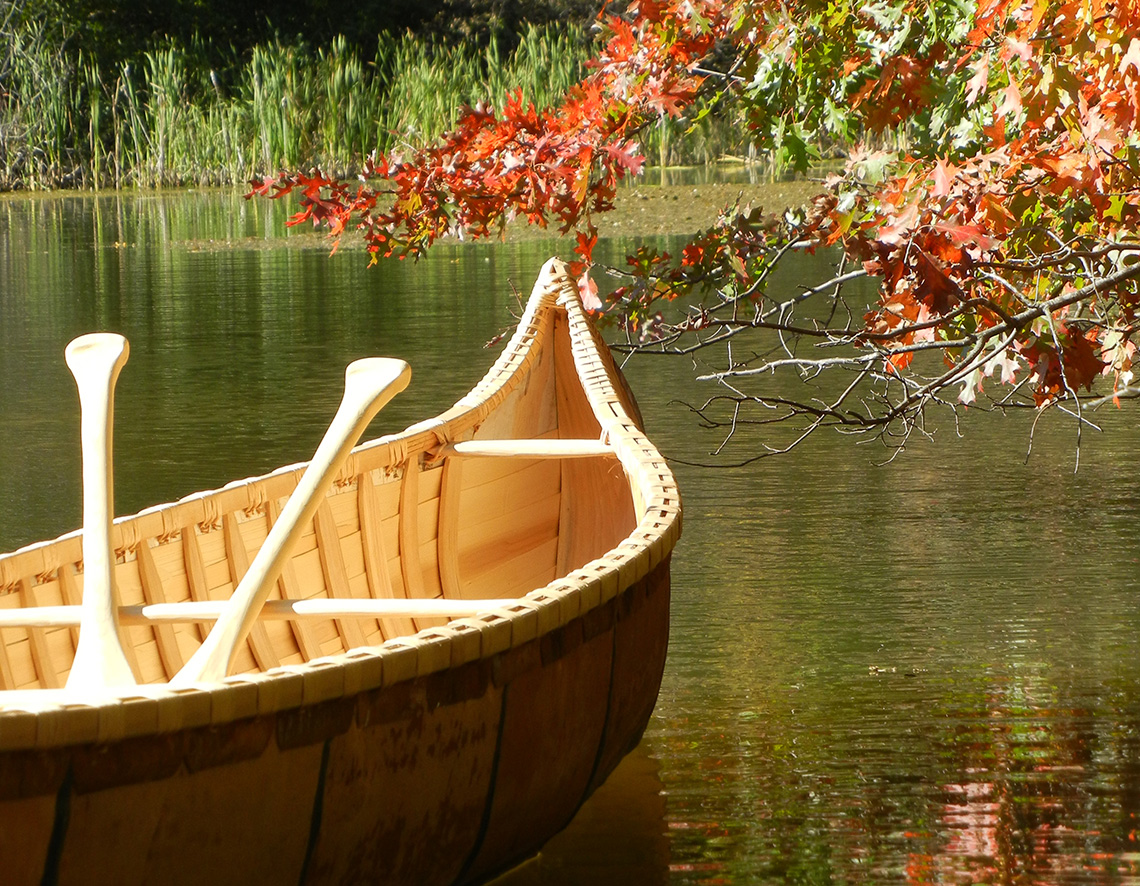
Traditionally, for Indigenous peoples, travelling by water was a common way to travel. During this time, there were no vehicles with wheels. Peoples from Indigenous communities also travelled and hunted on foot. Depending on the season, their mode of transportation changed to suit the conditions.
To travel by water, there were different water vessels that were used by Indigenous communities. Kayaks were used by Inuit communities and canoes were used by First Nations and later, Métis communities.
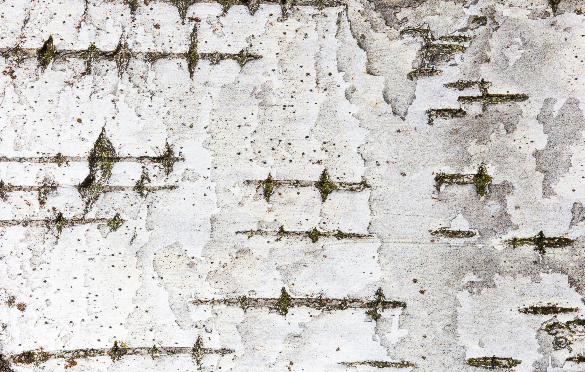
In the 1700s, communities used bark, such as birchbark which is naturally buoyant, waterproof, and was easily accessible in many regions within their traditional territories. When birchbark was not available, elm or pine bark was used. Modern canoes still follow a very similar pattern to the canoes made by Algonquin communities in Quebec and Ontario.
Communities could be identified by their canoe designs and materials. Thanks was given to the trees used to build the canoes. Bark was carefully harvested from the tree so that the tree would not die when the bark was removed. Only when using larger pieces would it risk the life of the tree, so older trees, near the end of their lives, were selected for this section. In this way, the tree’s life was honoured and respected, as trees also have a spirit, just like humans do.
The canoe connects the paddler to the land and water. It’s construction and movement allow the paddler to work closely with the motions of the water and travel very close to the land.
Learning check!
For each sentence, select the missing word from the drop-down menu.
Did you know?
Todd Labrador
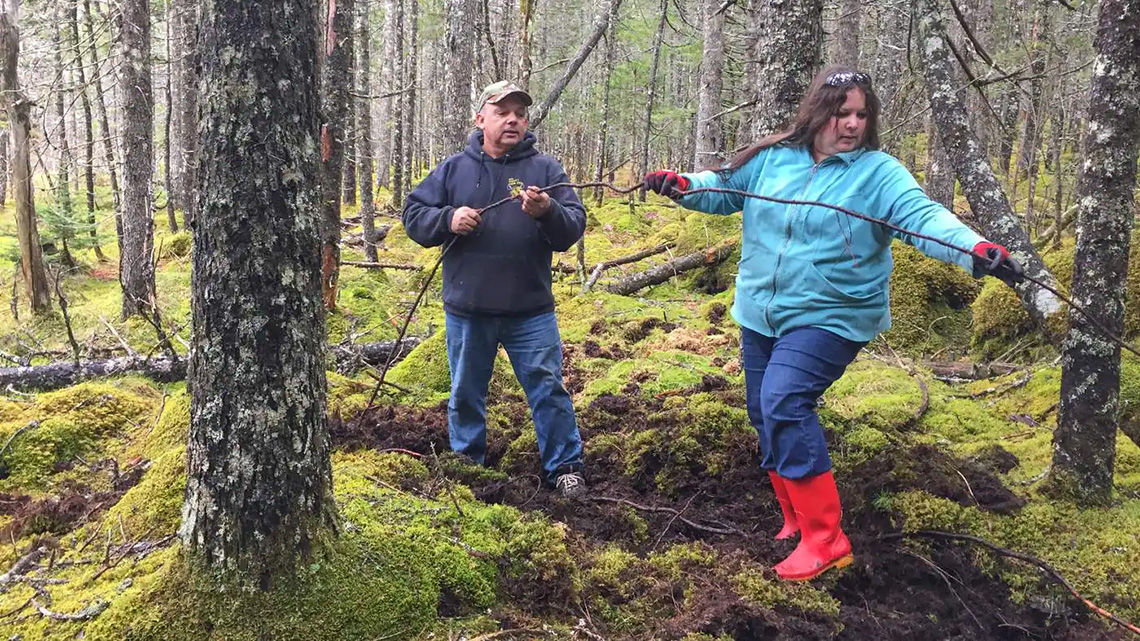
In southern Nova Scotia, Todd Labrador, from the Mi’kmaw community of Wildcat, learned to build Mi’kmaq canoes from his father, Joe.
Every spring, Todd and his daughter Melissa go into the forest to find areas that are mossy to retrieve the roots of spruce trees. Each canoe needs about 200 metres of this root, which they then weave through the birchbark to make sure that the canoe’s pieces fit snugly together.
In order to use the spruce tree, they are first boiled. Then, the bark is removed and they are divided into two bands, which becomes rope.
Cedar is used to create the frame of the canoe. During the assembly of the body of the canoe, birch bark is heated with hot water to shape it into a bow without it cracking. The various parts of the canoe are attached to the frame using the spruce tree roots rope.
Todd has been working to share his knowledge of canoe building with others in Mi’kmaq communities to share and celebrate the canoe building tradition.
“As I get older, I realize not a lot of people out there know [these] things.
Then I realize, if you know something not many people know, then you have a
responsibility, a huge responsibility, to make sure it continues
and to share it.”
– Todd Labrador
Why is the work that Todd Labrador is doing important?
Respecting the environment
Now that we have learned more about traditional canoe building techniques, let’s explore how the canoe, as a type of transportation, affects the surrounding environment.
Explore this video clip of Marissa, a member of Curve Lake First Nation located near Peterborough, Ontario. As she is harvesting wild rice, take note of the benefits of travelling through the water in a canoe as she works.
Record your noticing’s in a method of your choice.
Check out this Raven’s Quest video entitled “Marissa” to learn more about how she harvests wild rice using a canoe.
How is a canoe a means of transportation that is respectful of the environment?
Record your ideas in a method of your choice.
Press ‘Possible Answer’ to access how a canoe is an environmentally respectful means of transportation.
Marissa and her friend can get close to the rice using the canoe. They can move quickly and quietly through the water, not disturbing the plant life or wildlife that lives in and around the water. The canoe can remain still while they harvest the rice and drop it into the bottom of the canoe easily.
Snowshoes
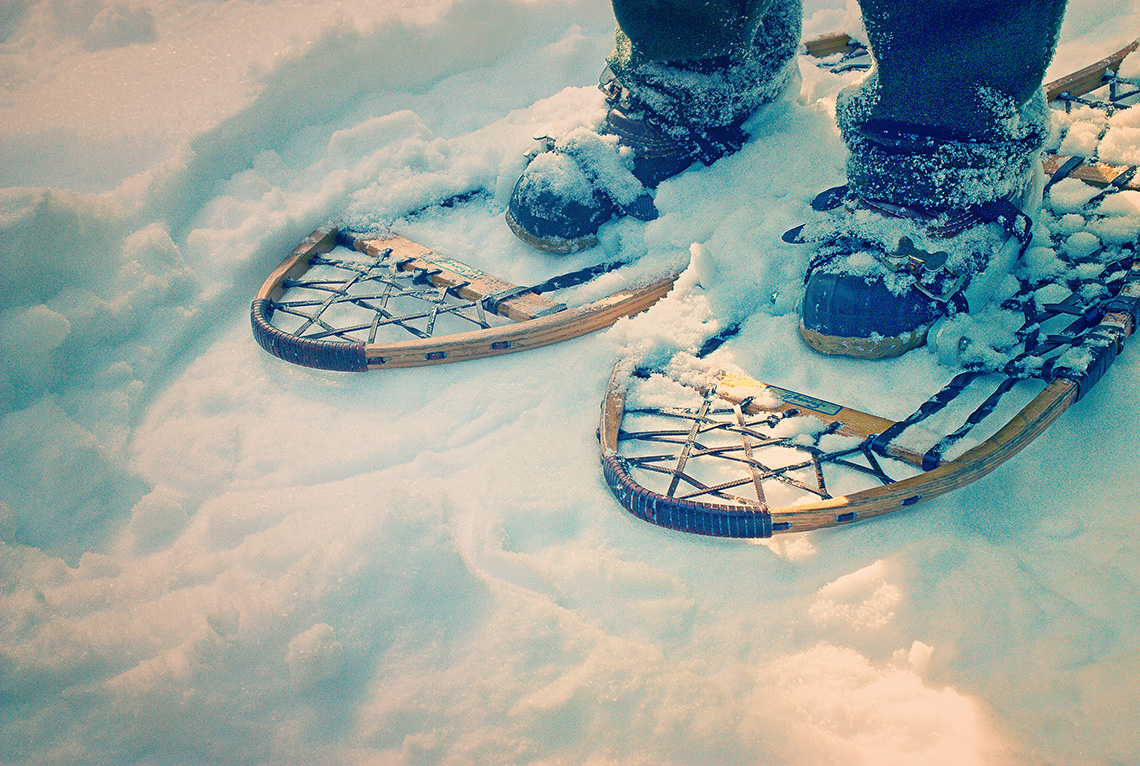
A person standing in snow wearing snowshoes and boots on their feet. The snowshoes are oval shaped and meet in a tail like backing. They are made of a wooden frame with rope woven throughout the centre of the frame and a leather strap to insert the foot.
Snowshoes are specialized outdoor gear for walking over deep snow. Their large footprint spreads the user’s weight out and allows them to travel on top of snow rather than sinking into snow. Adjustable bindings attach them to appropriate winter footwear.
Snowshoes have been used for thousands of years by Indigenous communities as an essential mode of winter transportation. The traditional snowshoe-making process demonstrates the ingenuity and innovative technologies of Indigenous peoples. They were considered beneficial for hunting and trapping because of the ability to travel over the deep snow quietly and effectively.
Today, snowshoes are crafted using lightweight materials such as aluminum, but the style and pattern remains adapted from the traditional snowshoe crafted and worn by Inuit, Métis, and some First Nations communities.
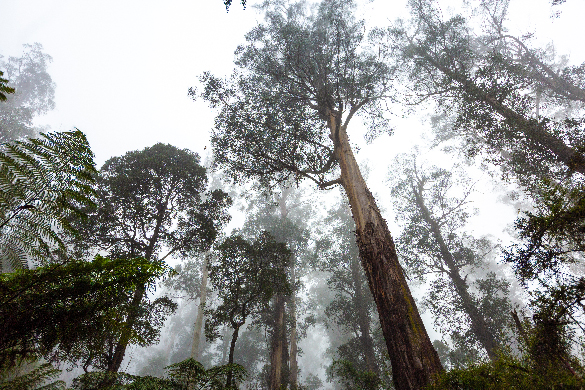
Snowshoes were originally made of wood from trees that were considered hard, such as ash. The wood was soaked to make it easier to bend.
Snowshoes were then laced together to create the frame, using deer, caribou and moose hide. The toe and tail sections of the show were laced with a light babiche (untanned hide), and the middle section used a heavy babiche to support the weight of the user. Leather or rawhide straps secured moccasins or another footwear to the frame. The frame shape would change depending on the kinds of snow and the landscapes that were being travelled as well as the materials used based on local geography and wildlife.
While some snowshoes are still made by hand, most snowshoes are designed using aluminum frames and steel cleats and used for recreational activities. Today, traditional wooden and hide snowshoes are considered works of art and engineering and are featured in many cultural centres but are also still used today for traditional activities.
For each sentence, select the missing word from the drop-down menu.
Check out the following video about snowshoeing. As you explore, consider why this way to travel would be respectful of the environment.
Record your thoughts in a method of your choice.
Press ‘Possible Answer’ to access how traveling by snowshoe is an environmentally respectful form of transportation.
Travelling by snowshoe is quiet and does not disturb the land under the top of the snow. The construction allows for quick stops and the traveller can move slowly or quickly if necessary.
Transportation and energy conservation
Energy conservation means to prevent wasteful use of energy to ensure its availability in the future.
Consider the traditional Indigenous construction of canoes and snowshoes.
- How were canoes made?
- How were snowshoes made?
- What kind of energy was used in the construction of each?
- What kind of energy is needed to power these modes of transportation?
- Why would canoeing and snowshoeing be considered a way to conserve energy when travelling?
Use two or more pieces of information from this learning activity to support your thoughts.
Record your answer in a method of your choice.
Consolidation
The science of travel
This learning activity connects new and existing approaches for young scientists to create positive changes in their communities.

Canoes and snowshoes that are manufactured today for recreational transportation are constructed differently than traditional Indigenous construction.
Explore the following images
Do you think that these current construction models would conserve the same amount of energy as the Indigenous models? Why or why not? Is there a way that they could be manufactured in a way that could conserve more energy?
Press ‘Hint’ to access some information to consider.
You might consider the following:
- the materials being used
- how the object may be manufactured
Putting it all together
How do you think Indigenous communities have contributed to the science of travel and transportation through their construction and use of canoes and snowshoes?
Use information from this learning activity to help you with your answer.
Record your ideas in a method of your choice.
Your community
Consider the environment in your own community.
- Do you think that snowshoeing or canoeing as a means of transportation could be used by your community members? Why or why not?
- How could either of these modes of transportation benefit your community members?
- How might you share information about these benefits in a way that could make a difference in your community? Why would this be effective?
Record your ideas in a method of your choice.
Reflection
As you read through these descriptions, which sentence best describes how you are feeling about your understanding of this learning activity? Press the button that is beside this sentence.
I feel…
Now, record your ideas using a voice recorder, speech-to-text, or writing tool.
